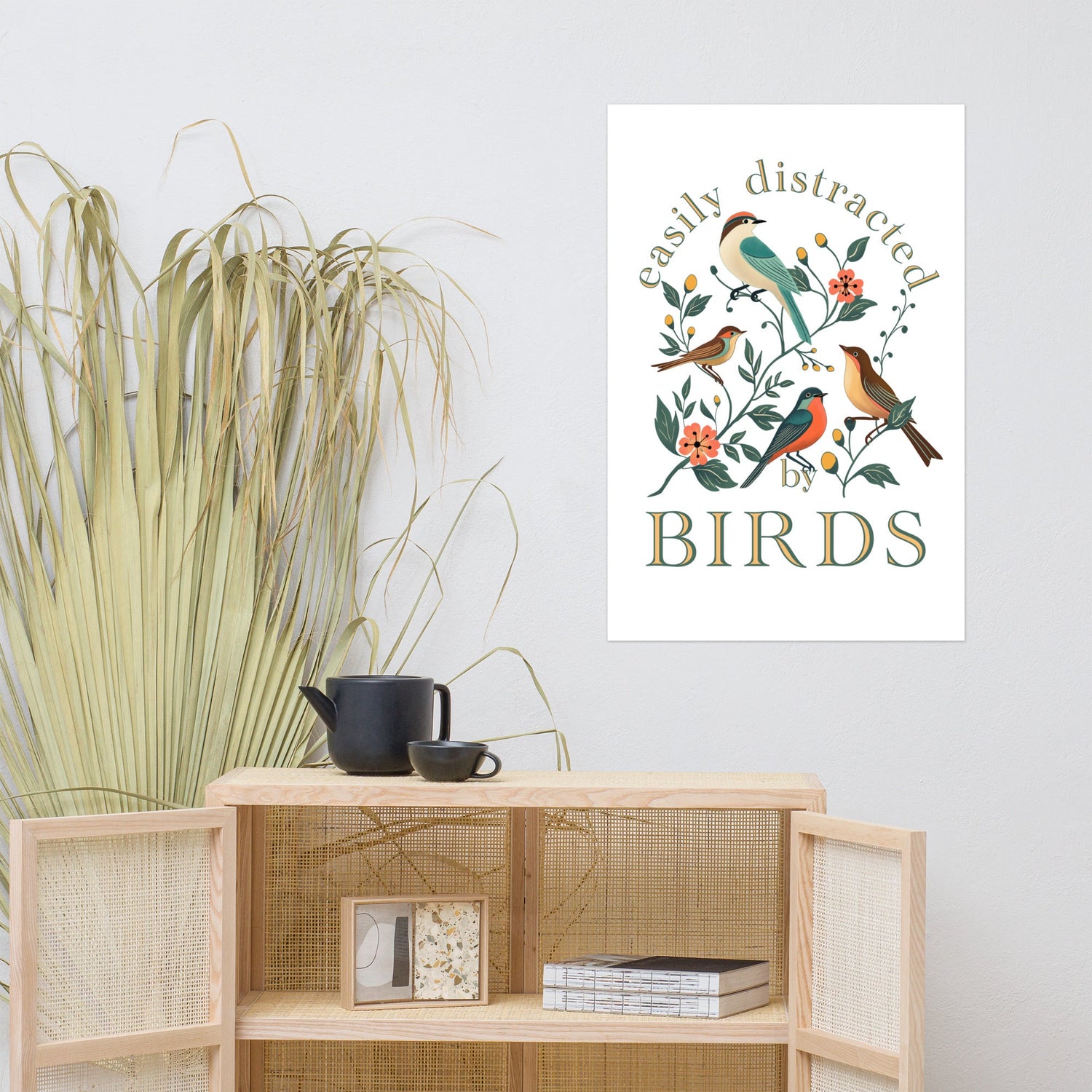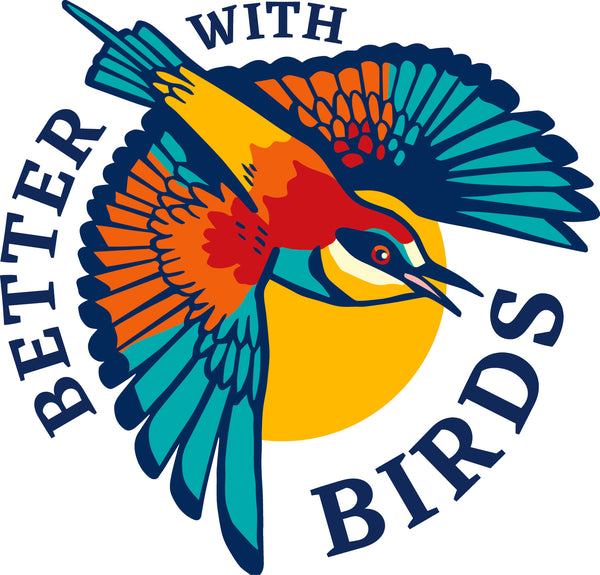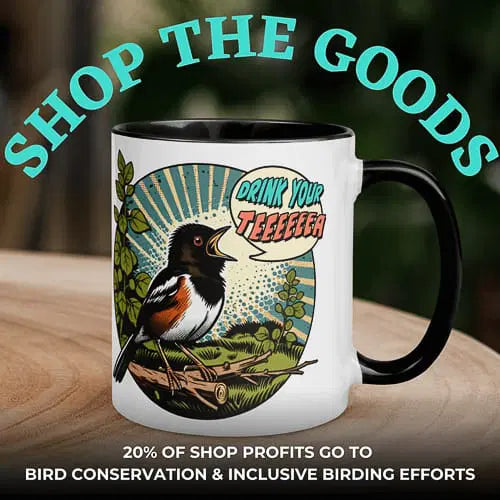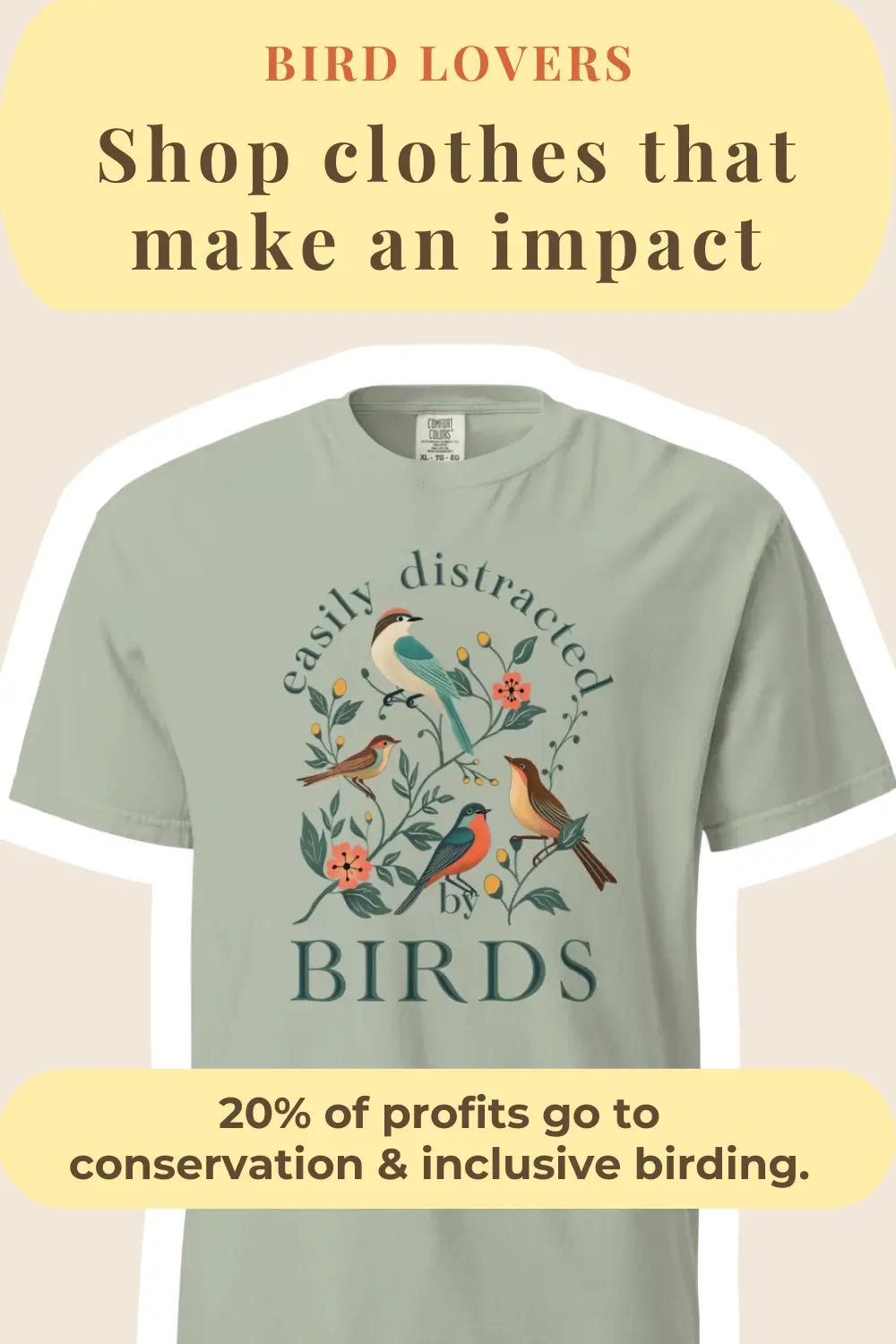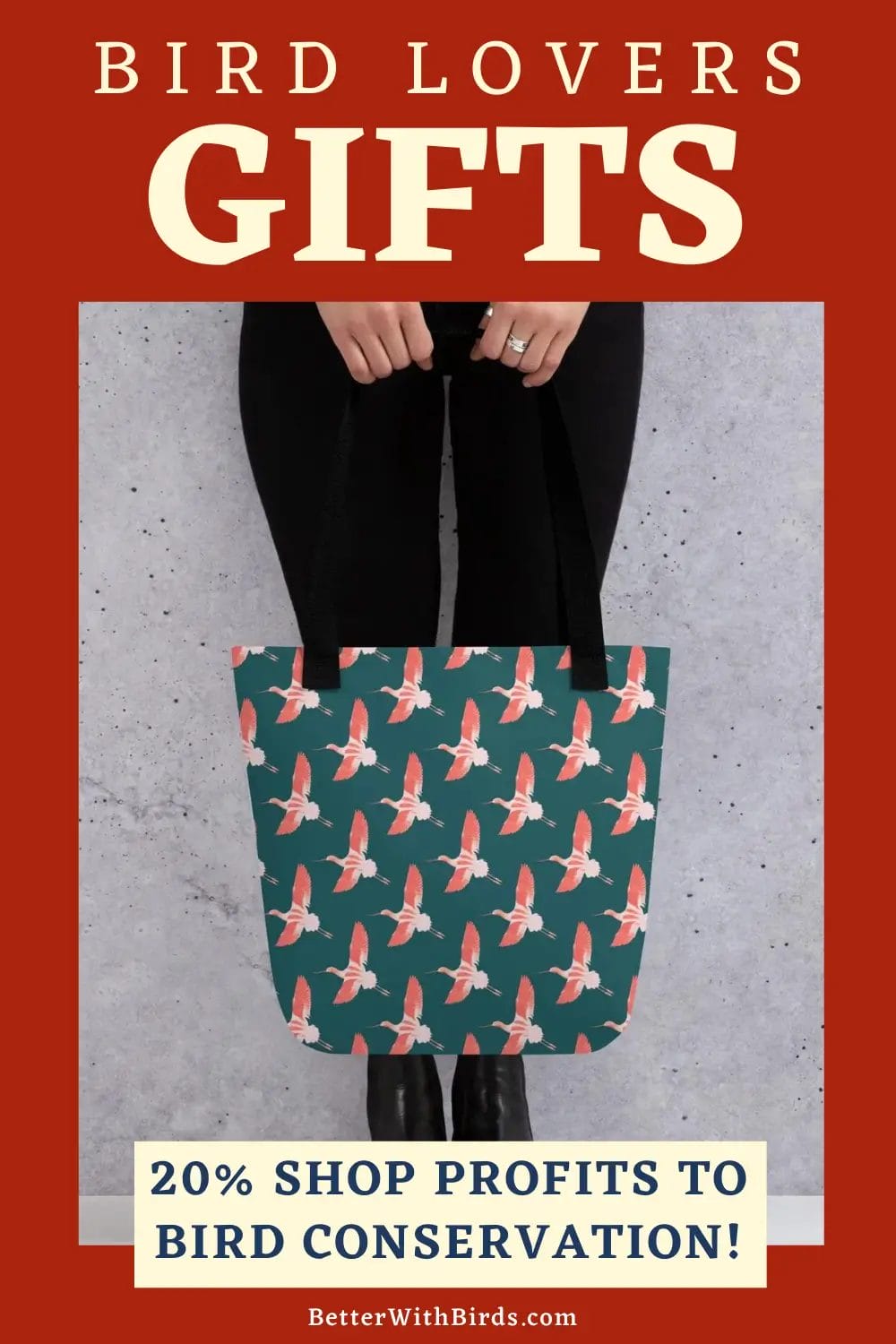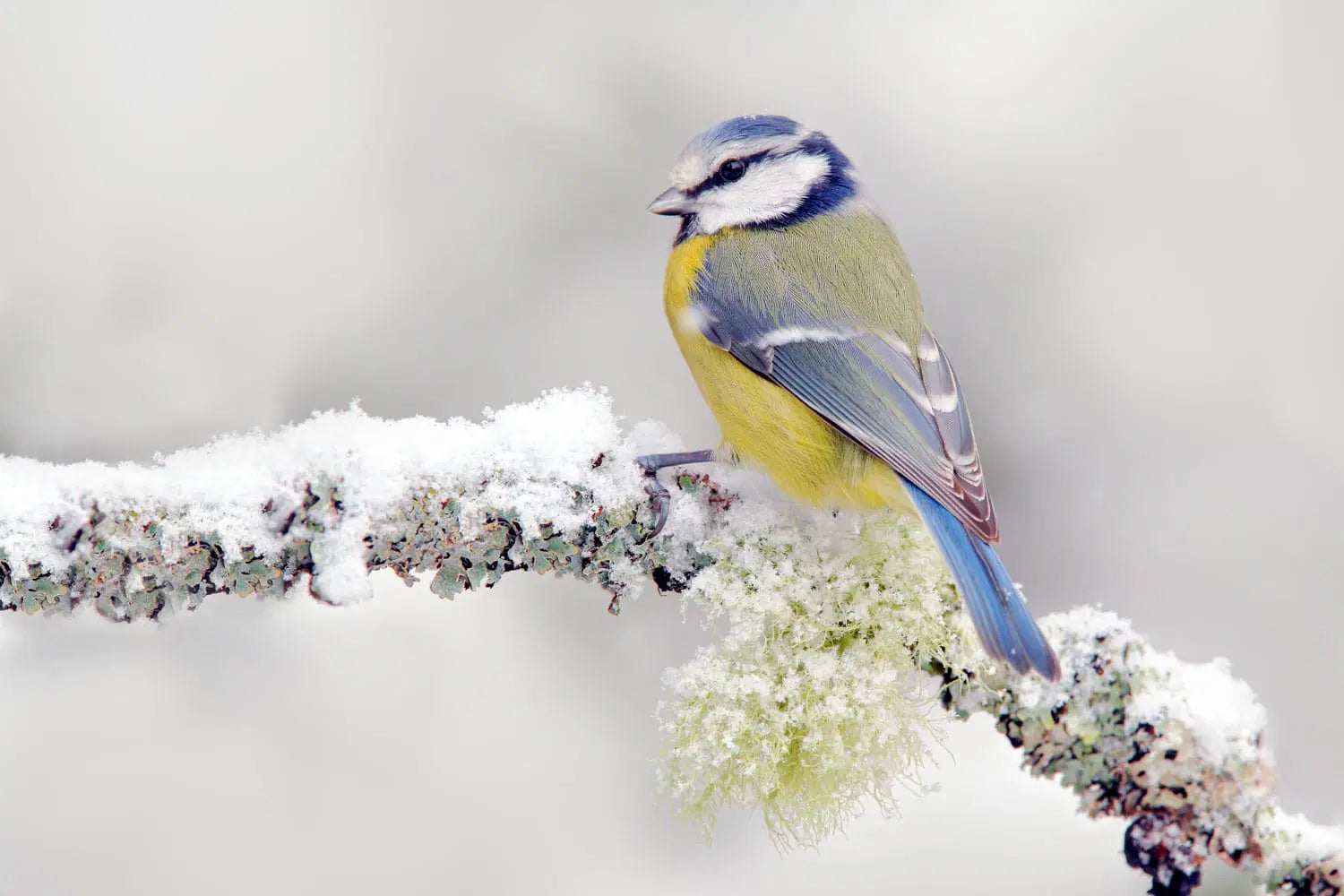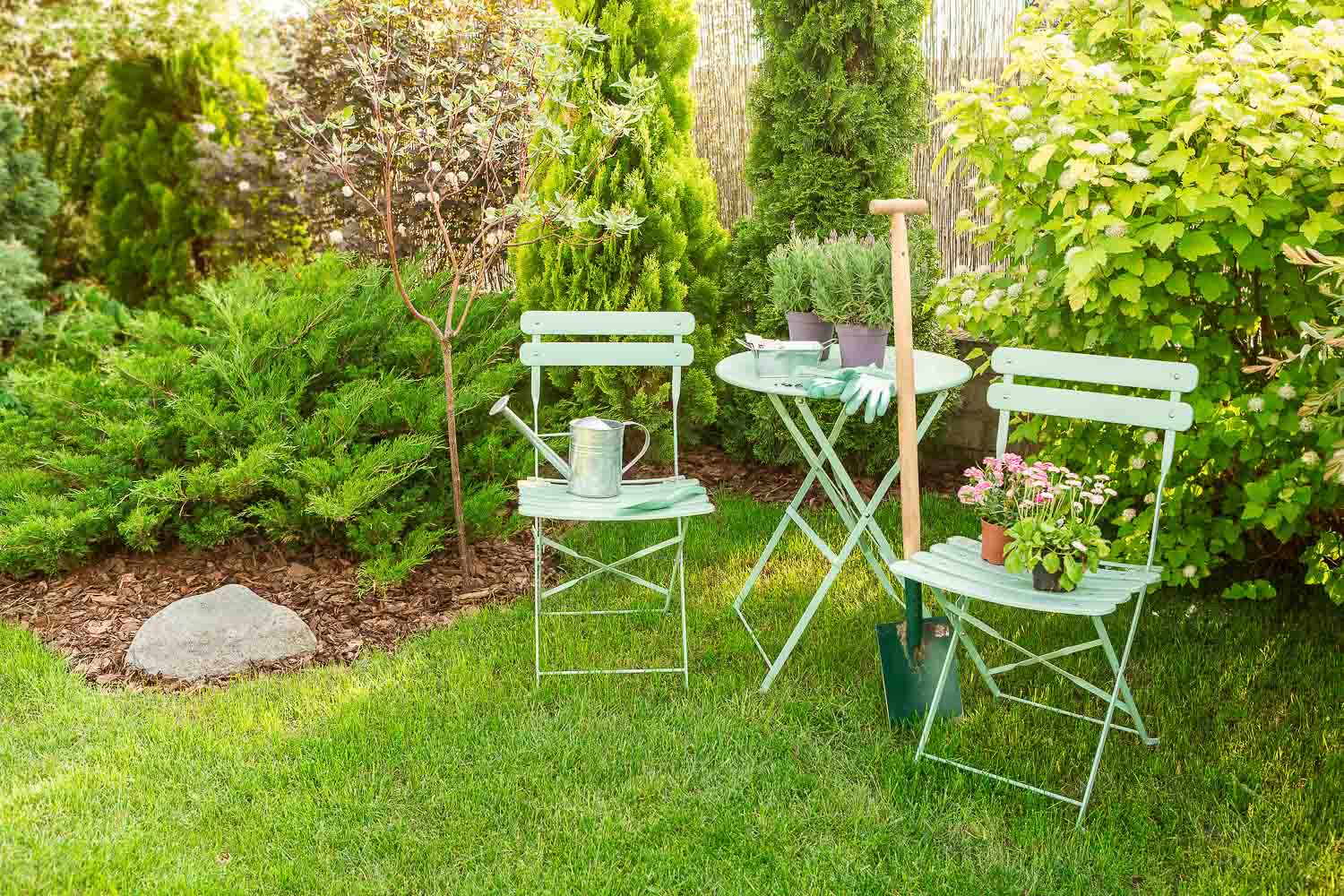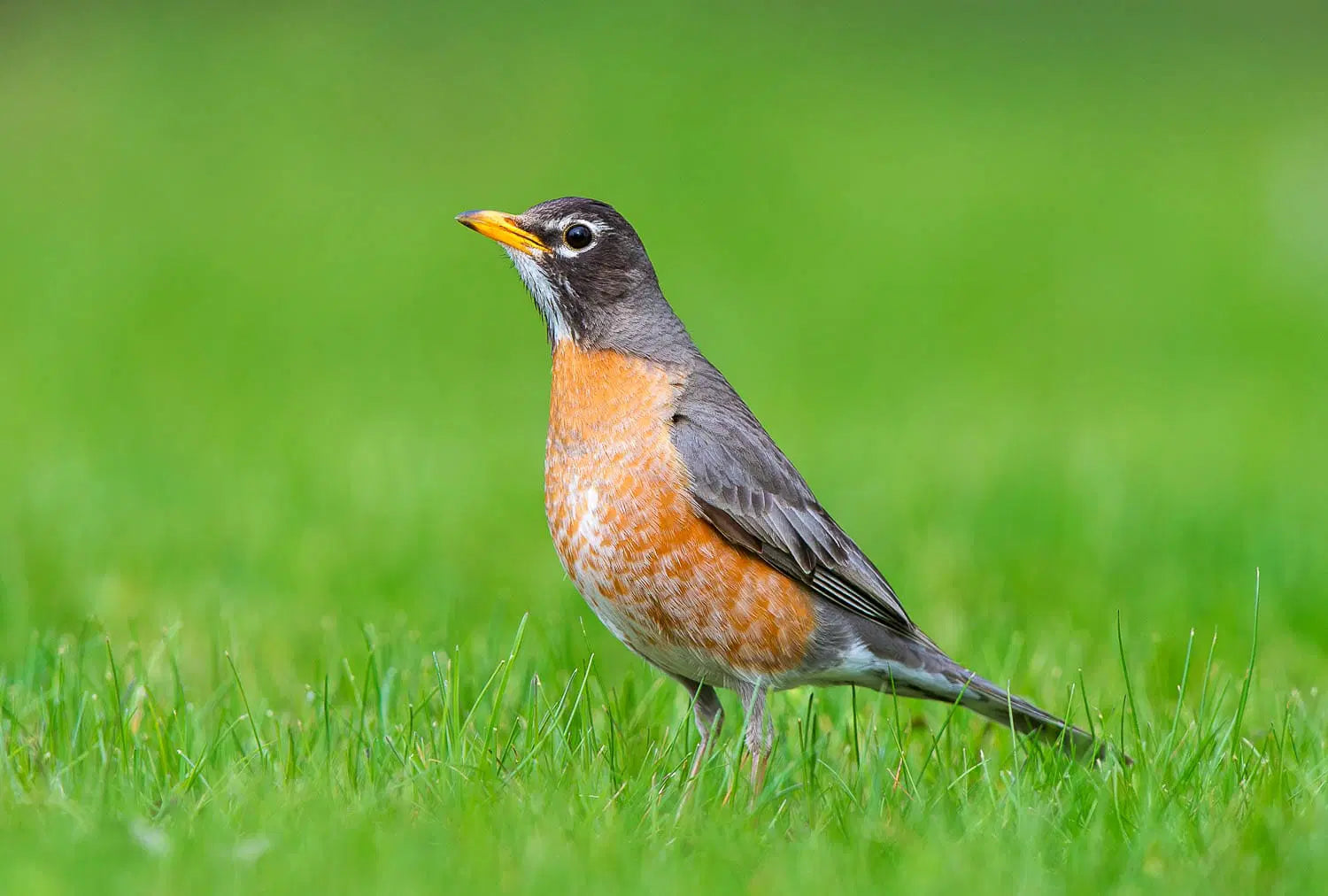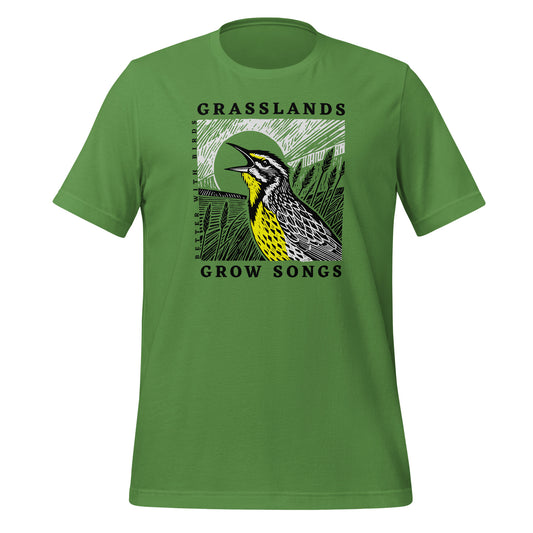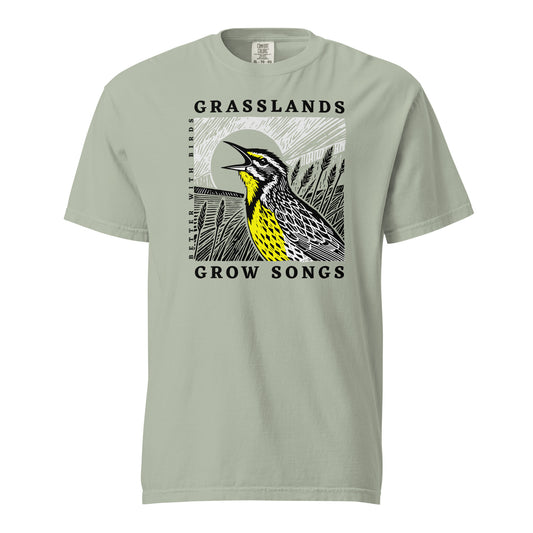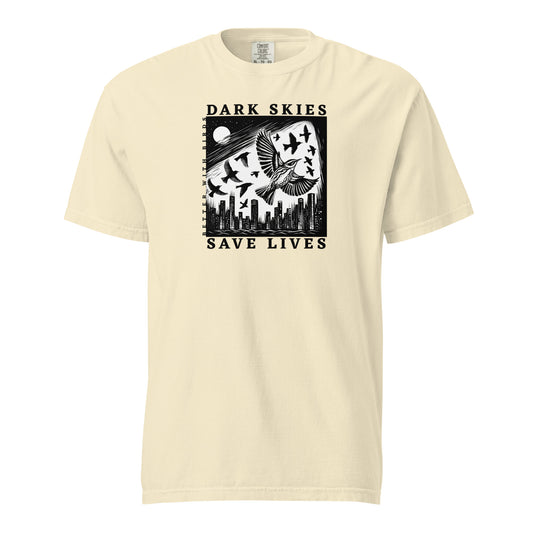How to Plant a Hummingbird Garden: Tips to Attract and Delight
Feature photo: Henk Bogaard /Shutterstock
Read Time: 8 minutes
Backyard Birding , Attracting Birds , Bird-Friendly Yards
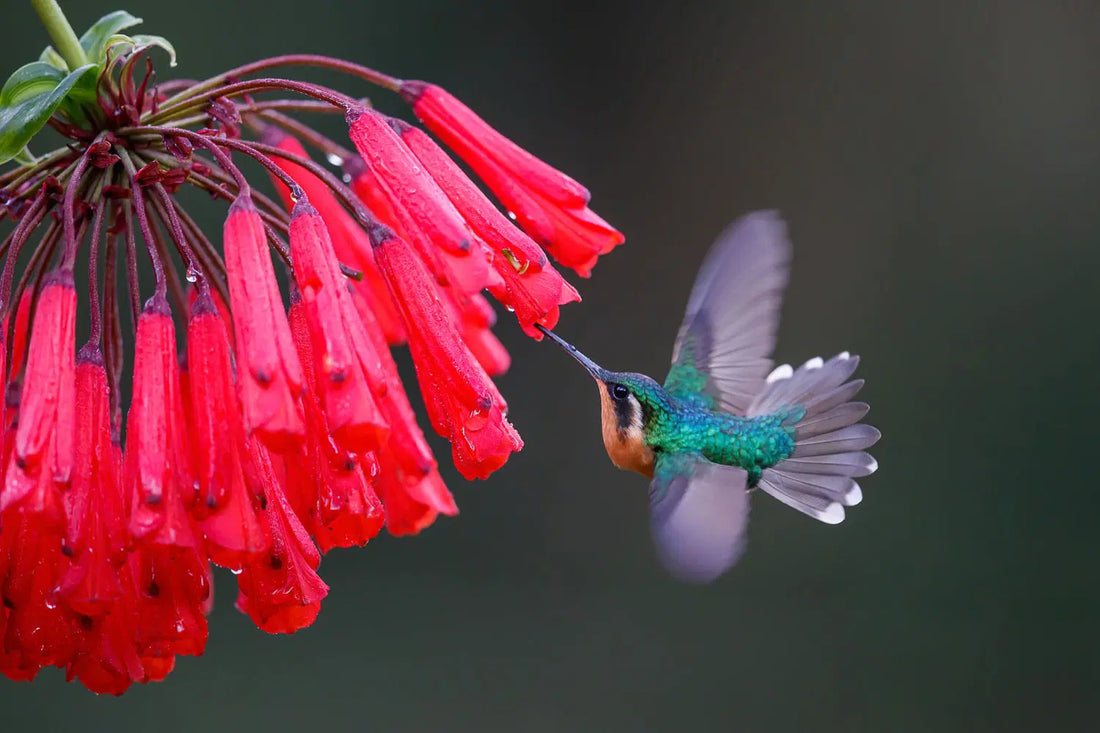
This post contains affiliate links. If you use these links to buy something, we may earn a commission at no additional cost to you. We only recommend products we fully support or use ourselves. Our full disclaimer
PIN THIS FOR LATER
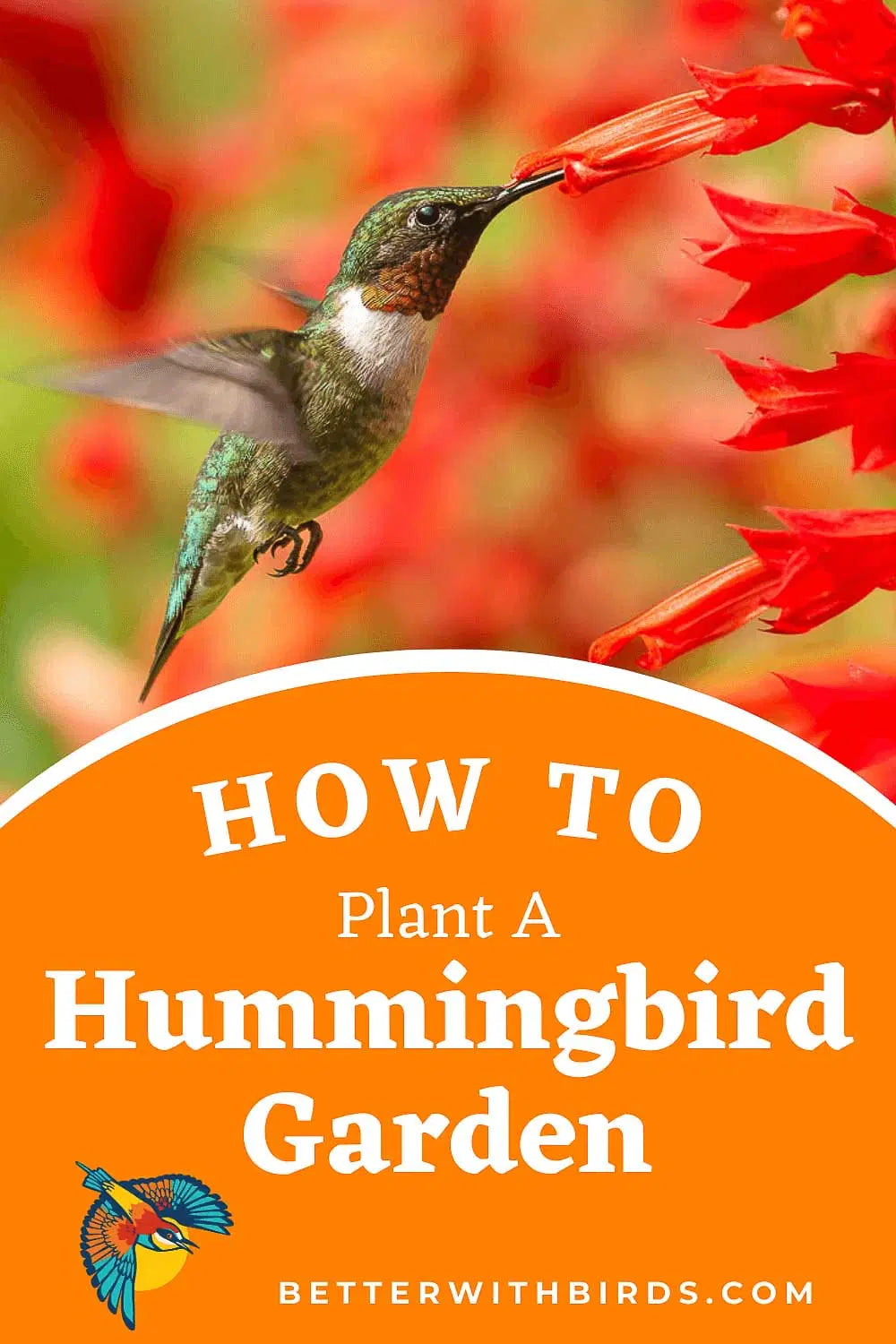
Contents
To welcome the iridescent charm of hummingbirds into your garden, the right habitat is key.
This article covers how to select plants with year-round appeal, incorporate water features, and create a layout that makes your garden a hummingbird magnet.
Get the practical tips you need to start building your very own hummingbird garden today.

Photo: Jaymi Heimbuch
Crafting Your Hummingbird Haven
Imagine setting the perfect dinner table for your guests, now apply that to hummingbirds. Your aim should be to cater to their needs, offering them:
- A variety of nectar plants
- Water features
- Shelters
- Nesting materials
And the result? A bustling, vibrant garden that offers endless enjoyment for both you and your winged guests in hummingbird gardens, featuring the beautiful wild bergamot.
We give 20% of all shop profits to bird conservation & inclusive birding efforts.
🌸 Selecting Nectar-Rich Botanicals
Just like picking out the perfect appetizers for a dinner party, you need to choose the right nectar plants for your hummingbird garden. You want to ensure a consistent supply of nectar throughout their active season. Mix and match plants with different bloom times and group the same species together for a more significant nectar supply.
This approach not only provides a steady flow of nectar, but also supports the nutritional needs of nesting hummingbirds, turning your garden into a hummingbird buffet.
🚿 Water Features That Entice
Just as no garden party is complete without a refreshing beverage, providing water features like solar water fountains, misters, drippers, and shallow basins can draw these delicate birds while also giving them a chance to bathe.
Strategically placing these features can create a highly entertaining view for you to enjoy their playful activities.
A nearby water source also helps keep the environment cool within their nesting area, especially crucial in arid climates.
🪑 Shelters and Perching Spots
Just like a good host ensures comfortable seating for their guests, providing perches for hummingbirds is equally important. Hummingbirds are no different. They need perches to rest, sleep, and monitor their territory.
Setting up decorative bid swings, dead branches or similar structures can create suitable perches in gardens with limited natural perching options.
The addition of appropriate-sized trees also promotes a nest-friendly environment, giving your feathered guests a safe place to rest their wings.

Photo: Jaymi Heimbuch
Planning Your Garden Layout
With the basics in place, it’s time to consider the arrangement. A well-planned garden layout is the key to a hummingbird’s heart.
You’ll need to balance sun exposure and shaded areas for optimal plant growth and bird comfort.
Also, remember to include a variety of nectar-rich flowers that bloom at different times to ensure a consistent food source.
Whether you’re working with a small window box or an expansive backyard, careful planning can turn any space into a hummingbird’s paradise.
🌤️ Mapping Sunlight and Shade
Understanding the sunlight and shade patterns in your garden is a crucial part of planning. Take note of where shadows fall and for how long.
These patterns can be influenced by the time of day, geographical location, and seasonal variations. Creating a light map can help in this process.
Knowing the different types of shade in your garden is also essential for selecting the right plants. A well-lit, well-shaded garden equals happy plants and happier hummingbirds.
🌿 Structuring for Visibility and Growth
Now, let’s consider the structure of the garden. For visibility and growth, create a tiered effect with taller plants in the center or back and shorter plants in the front.
You can also increase sunlight penetration and maintain open spaces by trimming lower tree branches and replacing solid fences with lattice.
Lastly, remember to spread hummingbird plants throughout your ideal hummingbird garden to minimize competition over food resources.
A well-structured garden offers more space, unobstructed views, and a peaceful dining experience for your hummingbird guests.
We give 20% of all shop profits to bird conservation & inclusive birding efforts.

Photo: Ondrej Prosicky/Shutterstock
The Best Plants for Your Hummingbird Garden
Choosing the right plants for your hummingbird garden is key. Native plants and those naturally occurring in your local area are the best choices. These plants provide familiar nectar sources that hummingbirds can’t resist. Consider factors like:
- climate
- location
- soil type
- staggered bloom times
to ensure a consistent food supply.
Flowers with tubular shapes, especially those that are brightly colored, produce substantial nectar that is particularly attractive to hummingbirds. Some examples of flowers that hummingbirds love include:
- Bee balm
- Cardinal flower
- Trumpet vine
- Salvia
- Penstemon
- Fuchsia
Remember, a diverse, nectar-rich garden is a hummingbird’s delight.
🌺 Cultivating Native Perennials
Native perennials, offering a continuous nectar source, are vital for drawing in hummingbirds. Plants that are especially attractive to these birds include:
- Bee balms
- Columbines
- Daylilies
- Lupines
When choosing these plants, consider their specific light and moisture requirements, as well as your garden’s spatial constraints and planting instructions.
For drought-prone areas, plants like California fuchsia, lavender, and hummingbird mint are excellent options that are drought-resistant and bloom during the summer, complementing other perennials in your garden.
🪻 Native Annual Additions for Variety
Incorporating annual plants into your hummingbird garden adds diversity and extra food sources. Here are some flowers that can draw more hummingbirds to your garden:
- Cleomes
- Impatiens
- Petunias
- Summer phlox
Having plants that bloom at different times ensures a constant supply of nectar throughout their season.
These annual additions not only enhance the garden’s aesthetic appeal but also support a broader range of pollinators, enhancing the garden’s ecosystem.

Photo: Kathy Clark/Shutterstock
Supplementing Natural Food Sources
Consider hummingbird feeders as a supplement to nectar-rich flowers for enhancing natural food sources.
These feeders, particularly important during the hummingbirds’ fall and spring migration, provide nectar critical to their survival.
Also, to ensure hummingbirds have access to the insects they need for protein, avoid the use of insecticides and herbicides in the garden.
After all, a well-fed hummingbird is a happy hummingbird.
🍽️ Proper Feeder Placement and Care
The strategic placement and care of feeders can greatly enhance your efforts to draw and maintain hummingbirds. Here are some tips:
- Position feeders above 6 feet to deter predators
- Keep them close to a window and near nectar-producing flowers for visibility
- Clean feeders daily using a bleach solution or vinegar
- Change the sugar water every other day to prevent mold
If there are many hummingbirds, provide multiple feeders spaced apart to accommodate them and mitigate aggression.
Proper feeder care and placement ensure your winged guests always have a safe and nutritious food source.
🫖 Offering Nutritious Alternatives
Another effective way to augment natural food sources is by offering homemade nectar. This can be created by mixing one part refined white sugar with four parts water, ensuring the sugar is completely dissolved.
It’s important to avoid adding any dyes, honey, or other additives to the homemade nectar as these can be harmful to hummingbirds.
Any extra sugar water prepared for hummingbird feeders can be stored in the refrigerator for later use. A nutritious alternative indeed.
We give 20% of all shop profits to bird conservation & inclusive birding efforts.

Photo: sen yang/Shutterstock
Creating Nest-Friendly Environments
Creating a nest-friendly environment is a crucial, yet often neglected, aspect of drawing in hummingbirds.
Unlike other birds, hummingbirds do not nest in holes or birdhouses.
They prefer to construct their nests on tree limbs and other small horizontal surfaces.
Providing a variety of shrubbery and small deciduous trees, especially around your yard’s edges, can create an inviting environment for nesting hummingbirds.
🪺 Supplying Nesting Materials
Supplying nesting materials can motivate hummingbirds to construct their nests in your garden. Some materials you can offer include:
- Spider webs: a vital material for their nests due to its flexibility and strength
- Clean pet hair
- White or light-colored wool yarn
- Natural fleece
- Cotton or wool batting
Pack these materials into a clean onion bag or suet cage, and place it near feeders where they can be easily accessed by the birds.
Even sticks and small branches left on bushes and trees can contribute to the available nesting materials within your hummingbird garden.
🌳 Ideal Nesting Locations
Choosing the perfect nesting locations requires maintaining a balance between accessibility and security. Here are some tips for finding the ideal spot for hummingbird nests:
- Look for trees, including dwarf or ornamental varieties, which offer ideal shelter for hummingbird nests.
- Hummingbirds often select thinner branches about one foot away from the trunk, typically at a fork, for constructing their delicate nests.
- Unpruned thorny plants such as rose bushes can provide an added layer of protection against predators.
By providing suitable nesting locations, you’re offering a secure and inviting space for hummingbirds to call home.

Photo: Ondrej Prosicky/Shutterstock
Enhancing Your Garden’s Appeal
Beyond the basics, refining your garden’s appeal can attract even more hummingbirds. Here are some tips to consider:
- Incorporate a variety of sizes and textures in your garden to add visual interest and give hummingbirds easier access to various nectar sources.
- Include fuzzy plants such as cinnamon fern and pussy willow to add texture and offer nesting materials.
- Add colorful garden accents like gazing balls, statues, and decorative paving stones to attract more hummingbirds. After all, who wouldn’t want to dine in a beautiful garden?
💐 Colorful Accents and Decorations
Adding color to your garden, much like spicing up a meal, enhances the overall experience. Some ways to add color to your garden include:
- Planting red, tubular flowers that are highly visible to hummingbirds and indicate rich nectar sources
- Planting clusters of bright-colored tubular flowers in groups, which are particularly attractive to hummingbirds
- Adding red garden decorations to draw migrating hummingbirds into your yard
With these colorful accents and decorations, including the vibrant scarlet beebalm, your garden will be the talk of the hummingbird community.
🦋 Attracting Butterflies and Other Pollinators
A garden that caters to hummingbirds can simultaneously serve as a refuge for other pollinators. Plants like butterfly bush and fuchsia attract both butterflies and hummingbirds, supporting a diverse ecosystem.
By attracting a variety of pollinators, you’re not only enhancing your garden’s appeal but also contributing to the health and biodiversity of your local environment.
We give 20% of all shop profits to bird conservation & inclusive birding efforts.

Photo: Fernando Calmon/Shutterstock
Seasonal Maintenance and Upkeep
Much like a home, a hummingbird garden demands regular maintenance, particularly given the seasonal needs of these delicate creatures.
From preparing your garden in spring, keeping a vigilant eye in summer, transitioning in autumn, to ensuring survival in winter, each season brings unique challenges and opportunities.
But don’t worry, with a little planning and care, you can ensure your garden remains a vibrant and attractive environment for hummingbirds year-round.
🌱 Spring Awakening
Spring marks a period of renewal for us and our hummingbird friends alike. Preparing your garden after winter is crucial to ensure it is ready for the return of these delightful birds.
From pruning branches to tilling soil, these preparations should be done before the hummingbirds arrive to minimize disturbance.
Now, sit back and wait for the magic to happen.
🌺 Summer Vigilance
When summer full sun prevails, your garden plants serve as crucial nectar sources for hummingbirds, particularly when wild plants reduce blooming during droughts.
To maintain plant health and ensure they remain healthy and productive sources of nectar, follow these tips:
- Regularly water your plants to keep them hydrated.
- Monitor for pests and take appropriate action to prevent infestations.
- Provide a variety of nectar-rich flowers to attract hummingbirds.
By following these steps, you can create a thriving garden that attracts and supports hummingbirds throughout the summer season.
Remember, a well-maintained garden with moist soil is a well-loved garden.
🍂 Autumn Transition
As leaves begin to fall and hummingbirds gear up for migration, your garden needs to adapt as well. It’s time to reduce watering, prepare plants for dormancy, and continue providing a food source for these birds until they leave.
An autumn-ready garden ensures a smooth transition for both you and your feathered friends during the nesting season.
❄️ Winter Survival
Winter presents challenges for bird species such as Anna’s hummingbirds that have acclimatized to cooler temperatures. Here are some ways you can help these birds survive the winter:
- Provide insulation for plant roots
- Protect sensitive plants
- Keep feeders ice-free
- Offer warm nectar
With these measures, you’re not only helping hummingbirds survive but also setting the stage for their return in the spring.
Final Thoughts
Creating a hummingbird-friendly garden is a rewarding endeavor that brings life, color, and joy to your backyard. From selecting the right nectar-rich plants, providing water features, shelters, and perching spots, to ensuring seasonal maintenance and upkeep, each step contributes to crafting a haven for these delightful creatures.
With your hummingbird garden in place, you’ll not only enjoy the captivating sight of these birds but also contribute to their conservation.
So, ready to roll up your sleeves and transform your yard into a hummingbird haven?
